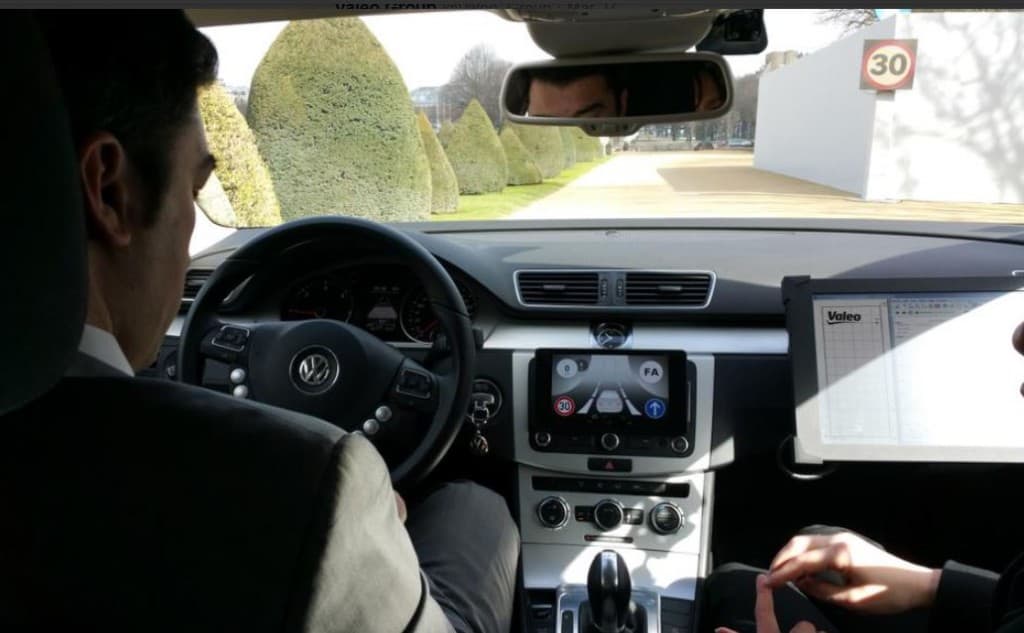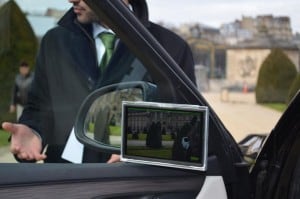 While Delphi’s connected Audi SQ5 was on its way to the New York Auto Show, auto parts maker Valeo and defense contractor Safran drove their self-driving Volkswagen CC around the National Army Museum in Paris on Friday. The two companies share their intelligence with each other to improve their products.
While Delphi’s connected Audi SQ5 was on its way to the New York Auto Show, auto parts maker Valeo and defense contractor Safran drove their self-driving Volkswagen CC around the National Army Museum in Paris on Friday. The two companies share their intelligence with each other to improve their products.
The self-driving VW drove in a simulated urban environment with winding roads, traffic lights and other cars on the Museum grounds. The Volkswagen is equipped with radar, lidar and 360-degree cameras and the Drive4U system.
The car stopped when a vehicle in front of it stopped, stopped for stop signals, and changed speeds to adjust to speed limits. When people walked onto the road at the finish line, the car stopped short of the line.
The auto-pilot function is activated by touchscreens on the steering wheel. The touchscreen options change according to function.
Four cameras, on front grill, the side mirrors, and on the back show an all-round view of the car on a dashboard display. The data from the cameras and sensors is used for the Drive4U functions.
The self-driving car was exhibited to show the future of technology of connected self-driving cars expected to be supplied to automakers by 2020. Although this type of car still requires a human driver, fully driverless cars are in expected to be deployed in the distant future.
The two companies collaborate by sharing knowledge, technology and software. Safran’s Amored vehicles use 360-degree camera software developed by Valeo for help with parking. Valeo self-driving cars rely on infrared imaging, algorithms and “dynamic mapping” used in Safran Patroller drones.
Other Valeo products on display were Bluetooth door locking for car rental or sharing, a precision inertial guidance system for when GPS is unavailable, and disappearing side mirrors.
When side mirrors are removed it reduces drag on the car. Instead of the mirror a camera is used and the view is displayed on a screen.
So far in the month March, the Delphi’s Audi SQ5 is winning the race for the most media attention, followed Tesla and Mercedes-Benz.
Incredible journey #delphidrive @delphiauto pic.twitter.com/SPCNgtn03D
— Delphi Automotive (@DelphiAuto) March 30, 2015
Other self-driving car contenders are Renault-Nissan, Volvo, and, Google that wants to work with automakers.
Mercedes F015 that made its stage debut as “Luxury in Motion” at CES in January.
Consumer Watchdog sent a letter the California Department of Motor Vehicles over self-driving car law safety.
The most wanted features of self-driving cars are “self-adjusting performance based on weather conditions,” and “self-parking to find a parking space”.